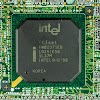What is DHCP (Dynamic Host configuration protocol)

Dynamic Host Configuration
Protocol (DHCP) is a network protocol used to configure network devices to
enable them to communicate on an IP network.
DHCP infrastructure consists of:
•
DHCP
Servers
•
DHCP
Clients
DHCP server maintains a database
of IP addresses and configuration information. When it receives a request from
a client, the DHCP server allocates an IP address from a given range and sends
the configuration information to the client. DHCP servers are preconfigured
with a range of IP address and additional network configuration information by
the administrator. Like other TCP/IP, DHCP uses port numbers 67 & 68.

NetBIOS over
TCP/IP
NetBIOS over
TCP/IP (NBT, or sometimes Net BT) is a networking protocol that enables legacy
computer applications (relying on the NetBIOS API) to run on modern TCP/IP
networks. NetBIOS was developed in the early 1980s, targeting very small
networks (about a dozen computers).
NBTSTAT: NBTSTAT is a command line utility for viewing statistics of NetBIOS over TCP/IP.
WINS (Windows Internet Name Server)
Windows Internet
Name Service (WINS) is Microsoft's implementation of NetBIOS Name Service
(NBNS), a name server and service for NetBIOS computer names. WINS is to
NETBIOS Names just as DNS is to
hostnames, providing name resolution services for computers running windows on
Microsoft Windows network.
DDNS
DNS requires hosts to be assigned
static IP addresses. DNS is not suitable when using DHCP environments; as the
IP addresses keeps changing over time and the DNS service requires permanent IP
addresses for its records. For example if a consumer using a DSL or cable modem
wants to host a website (accessible to the public) on his computer, it is not practically
possible as the public IP address changes over shorter period of times. In such
a scenario, DDNS can be used.













0 Comments